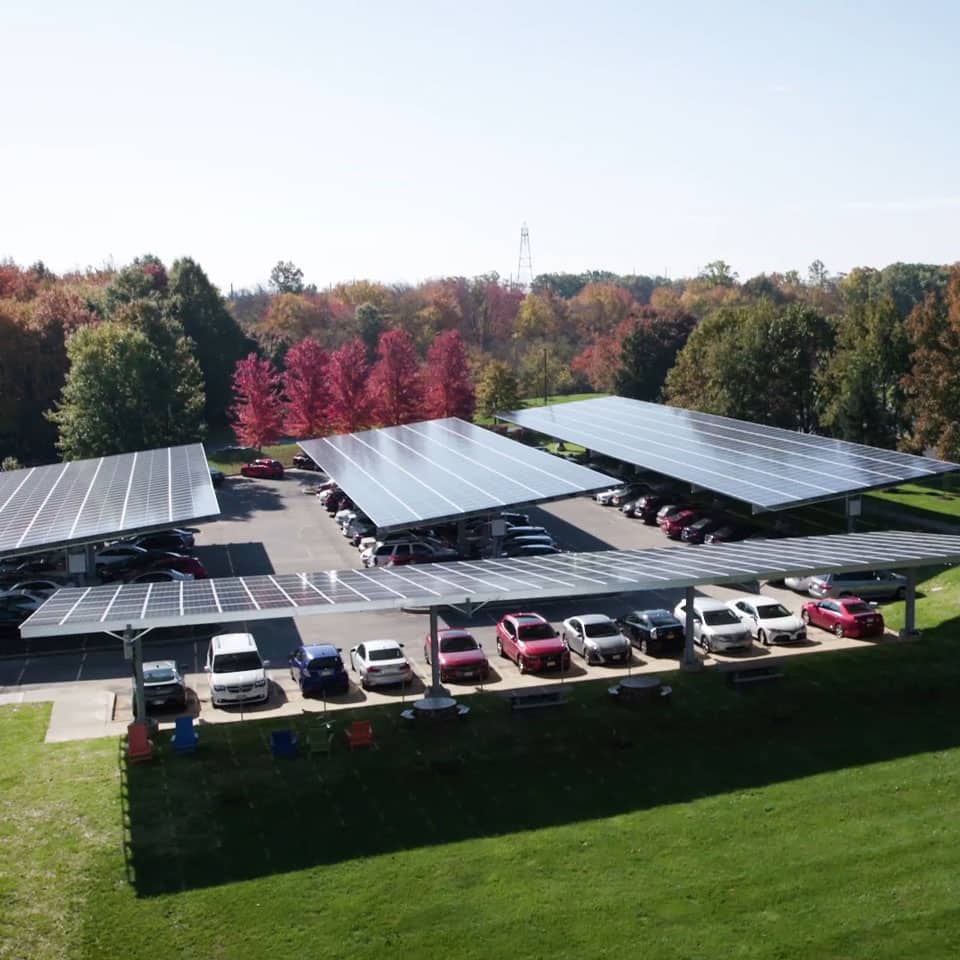Active Efficiency in Action
The best way to understand the value of Active Efficiency is to see it in action. There are many examples that demonstrate the potential of Active Efficiency. Between the economic, social, and environmental benefits, the hard work that goes into making these examples successful is something to be celebrated.
Explore the stories of Active Efficiency
The stories below exemplify how Active Efficiency is transforming our energy system – spanning sectors including transportation, industry, buildings, and power generation, and emerging from public, private, and collaborative initiatives. Get an in-depth look by clicking on each module, and be sure to check back as we add more success stories to this collection.

Digitalization at Hilton Worldwide: A “Suite” Example of Active Efficiency
Hilton Worldwide is a well-known hospitality company with more than 4,500 properties around the world. To achieve its multifaceted efficiency and sustainability goals, Hilton sought the expertise of Active Efficiency Collaborative Member Schneider Electric and, since 2009, this partnership has resulted in energy savings of 14.5%.

Mosaic Gardens: Low-Income, Multifamily Housing Leading in the Energy Transition
The Mosaic Gardens apartment complex in Pomona, CA, is the site of a collaborative project involving Active Efficiency Member Southern California Edison (SCE) and Linc Housing among other stakeholders, demonstrating how low-income, multifamily developments can integrate emerging energy technologies.

Streetlights as a Beacon for Active Efficiency Deployment in New York
New York State, home to more than 20 million people, is also home to more than 1 million streetlights. In 2018, New York launched the Smart Street Lighting NY initiative, with the goal of replacing at least 500,000 street lights by 2025 with energy-efficient alternatives such as LEDs, which can reduce streetlight energy use by 74%.

Innovating The Path For Inclusive Access to Efficiency Technologies
To fully enjoy the benefits of Active Efficiency – using digital technology to optimize energy use – consumers need to have access to the energy efficiency technologies that help to better manage household energy consumption. While many utilities offer programs that help lower upfront costs for these devices, reaching low-to-moderate customers can be a challenge.

Ameresco’s Active Efficiency Approach at Parris Island
The U.S. Marine Corps Recruit Depot (MCRD), Parris Island is an 8,095-acre military campus that houses up to 20,000 Marine trainees annually. Given its location in Port Royal, South Carolina – a region prone to devastating hurricanes and tropical storms – resilience is valued at a premium. In 2015, MCRD selected Ameresco to complete a comprehensive energy optimization project that would bolster resilience.

Improving Resilience in Washington State: Snohomish County’s Arlington Microgrid Project
Snohomish County Public Utility District (Snohomish PUD), one of the largest public utilities in the Pacific Northwest, designed its upcoming microgrid in Arlington, WA, to meet two objectives: increase grid resilience and improve disaster recovery response.

El Paso Electric Marketplace: Integrating Energy Efficiency and Demand Response
Uplight reports that 60-80% of marketplace customers who buy a smart thermostat also successfully activate it within the demand response program, compared to fewer than 8% of U.S. homes equipped with smart thermostats that were enrolled in a utility thermostat DR program in 2018.

Siemens ‘Living Lab’ Microgrid Research Center in New Jersey
The need to mitigate climate change and adapt to more frequent and intense natural disasters requires a cleaner, more reliable, and more resilient energy system. In recent years, microgrids, with their potential to reduce emissions, save energy, and bolster grid resilience, have emerged as a possible solution.

Energy Efficiency as a Service (EEaS) in Seattle
The growing demand for deep retrofits to help decarbonize the nation’s building stock has faced many economic barriers. Prime among these is the “split incentive,” where the financial benefits of energy efficiency flow to tenants through reduced energy bills, rather than to the party responsible for the financing of the efficiency measures.

Strategic Energy Management at Bonduelle Fresh Americas
Bonduelle Fresh Americas, one of the nation’s largest produce distributors, set an energy reduction target of 5% energy savings across its portfolio as part of its corporate responsibility plan.

Kent State University Central Plant Optimization: Ratcheting Up Energy & Cost Savings
Kent State University in Northeast Ohio is a living example of how an Active Efficiency approach to energy management can boost savings by integrating digital technologies with traditional energy efficiency measures.

Battery Energy Storage System at Fort Carson: Shaving Peaks & Energy Costs
Fort Carson integrates traditional energy efficiency with battery storage and peak-shaving controls. This combination of technologies saves Fort Carson more than $500,000 a year on its electric bill by optimizing energy use in a time-dependent manner – that’s Active Efficiency in action.

Efficiency Vermont: Heating Electrification Program and Flexible Load Management Pilot
Vermont’s cold winters, old building stock, and high cost of fuel oil and propane contribute significantly to its high energy burden, ranging from 6-20% of household income, according to a 2019 study. Efficiency Vermont’s energy efficiency programs help ease this high burden.

Electrification of Transportation in Colorado
Colorado has prioritized a top to bottom strategy, utilizing the executive branch, the legislature, utilities and their regulators, as well as regional partners, to create a multi-pronged approach to reduce emissions through transportation electrification.

Demand Response at Portland General Electric
Portland has an aggressive goal of achieving 100% renewable electricity by 2035. Achieving this will require much higher levels of demand response (DR) participation, which is why the Oregon Public Utility Commission directed the city’s utility, Portland General Electric (PGE), to acquire new DR resources.

National Association of State Energy Officials Joint Task Force on Comprehensive Electricity Planning
The National Association of Regulatory Utility Commissioners (NARUC) and the National Association of State Energy Officials (NASEO) convened a joint task force on comprehensive electricity planning.

Beneficial Electrification through the Efficiency Maine Trust
In Maine, winters are long and cold, and 62% of heating uses costly and polluting #2 fuel oil. In 2013, the Efficiency Maine Trust (EMT) kickstarted a program to incentivize high-performance, mini-split ductless heat pumps and, a few years later, heat pump water heaters.

NODES Independent Marketplace in Europe for Trading Decentralized Flexibility and Energy
To effectively promote flexible beneficial electrification, it is necessary for the benefits of this technology to be valued in the marketplace.

Customer-centered Program Design
Customer-focused utility programs need to be streamlined and designed to provide equitable access to services. Programs also should be designed to meet the specific needs of different customer segments -- e.g. enabling aggregation for smaller energy users and driving deeper savings and demand flexibility for larger energy users. The initiatives and programs highlighted in this section demonstrate how a stronger focus on customer needs can lead to improved energy performance and demand flexibility outcomes.

Demand Management and Decarbonization
Demand management is key to greater decarbonization. Both will require an all-of-the-above approach to energy management, including traditional energy efficiency improvements as well as beneficial electrification and integration of distributed renewable energy sources and storage. Adopting program frameworks that focus on decarbonization can help decision-makers integrate these objectives and reduce complexity for customers. The market frameworks and emissions targets highlighted in this section show how to set the stage for performance-based outcomes.

Valuation & Metrics
Determining the value of energy efficiency and demand flexibility is critical for assessing cost-effectiveness, ensuring policy support, and designing appropriate program incentives and compensation. Standardized methodologies will help meet these needs for valuation. The frameworks highlighted in this section are forging a path toward improved valuation of energy efficiency and demand flexibility, which can inform the metrics used to design and implement performance-based utility programs.

Market Enablers
Collaboration among regulators, legislators, and other decision-makers can create favorable market conditions for performance-based utility programs. With access to energy data and actionable insights, both customers and aggregators can harness these market conditions to achieve deep retrofits and improve demand flexibility. The programs and tools highlighted in this section provide examples of features that performance-based programs can adopt to stimulate market demand.